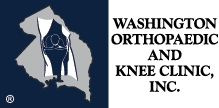Fractures around the Knee
These fractures include those on the end of the thigh bone (femur), Upper part of the shin bone (tibia) and patella (kneecap).
There are variety of fracture types and locations which may require special approach to diagnosis and treatment.
Symptoms:
Generally, symptoms include pain, swelling, discoloration, limitation of movement and inability to bear weight. There are occasions where symptoms are minor and several hours or days passes before individual seeks medical attention.
Diagnosis:
In most instances radiographic studies (x-rays) is adequate to make the diagnosis, however there are also situations where Nuclear Medicine Bone Imaging (bone scan), tomogram or Magnetic Resonance Imaging (MRI) may become necessary.
Treatment:
Depending on the nature of injury and location of the fracture treatment may be non-operative or operative. In some situations, there may be a need for post-operative immobilization (cast or brace) for a period of time, following which a course of physical therapy will be initiated.
